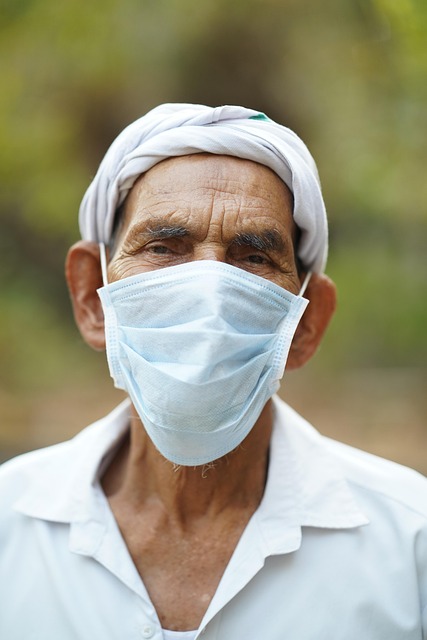Child protective services (CPS) navigate a complex balance between parental rights protection and child safety, crucial for a child's well-being. They identify risks through vigilant observation of signs like physical or emotional distress in children. Intervention occurs when there's reasonable cause to believe a child is at harm, involving assessments, interviews, and record reviews. Legal removal from parental custody follows a strict framework, ensuring due process rights while courts weigh parent-child relationships and safety. Comprehensive support services aim to prevent crises by offering resources like home visits, education workshops, and mental health services. Early intervention mitigates abuse or neglect's lasting effects on children's mental health through rehabilitation programs for families, counseling, and parenting classes, ultimately promoting healthy development.
Child welfare and protective services are vital components of ensuring the safety and well-being of minors. Balancing the protection of vulnerable children with the preservation of parental rights is a delicate task, requiring comprehensive understanding and strategic intervention. This article explores key aspects of child welfare, from recognizing risks to legal procedures for removal, emphasizing the importance of early prevention and supportive family measures. By delving into these areas, we aim to illuminate the complex interplay between parental rights protection and child safety.
- Understanding Child Welfare and Protective Services: An Overview
- The Importance of Balancing Parental Rights and Child Safety
- Identifying Potential Risks and Signs Requiring Intervention
- Legal Framework and Procedures for Removing a Child from Parental Custody
- Supportive Measures for Families at Risk: Prevention and Early Intervention
- Long-term Consequences and Rehabilitation for Children and Parents
Understanding Child Welfare and Protective Services: An Overview

Child welfare and protective services are essential components in ensuring the safety, well-being, and overall development of children. These services aim to protect minors from abuse, neglect, and any form of exploitation while also supporting their families. At its core, child welfare involves a range of interventions designed to strengthen family bonds, prevent harm, and promote positive growth. It focuses on providing resources, guidance, and protection to vulnerable children and young people.
Understanding Child Welfare and Protective Services requires recognizing the delicate balance between intervention and respect for parental rights. While every effort is made to keep families together, circumstances may arise where a child’s safety and interests are at risk. In such cases, protective services step in to assess the situation, offer support, or facilitate necessary placements to ensure the child receives the care they need. This process involves careful consideration of each family’s unique dynamics and cultural context, ensuring that interventions are tailored to meet their specific needs while upholding parental rights protection.
The Importance of Balancing Parental Rights and Child Safety

In any discussion on child welfare, there exists a delicate balance between upholding parental rights and ensuring child safety. It’s a complex interplay where both factors are equally crucial for the well-being of children. Parental rights protection is fundamental to preserving family structures and empowering parents to make decisions in their children’s best interests. However, when a child’s safety is compromised, it becomes the duty of protective services to intervene, especially if there’s evidence of abuse, neglect, or exploitation.
Striking this balance requires a nuanced approach that considers the unique circumstances of each case. It involves assessing potential risks while also acknowledging the value of familial bonds. Effective guidance in child welfare should promote open communication between parents and authorities, facilitate access to resources for families in need, and ensure that safety measures are proportionate and respectful of parental autonomy.
Identifying Potential Risks and Signs Requiring Intervention

Identifying potential risks and signs requiring intervention is a critical aspect of child welfare and protective services. Professionals in this field must be vigilant in spotting indicators of abuse, neglect, or exploitation, as early detection can significantly enhance the well-being of children. These signs may include physical injuries, behavioral changes, or emotional distress, which could suggest underlying issues at home. Additionally, risk factors such as parental substance abuse, mental health problems, or a history of violence can signal potential hazards for a child’s safety and development.
Intervention is warranted when there is reasonable cause to believe that a child is at substantial risk of harm. This may involve assessing the family environment, conducting interviews, and reviewing relevant records. By taking prompt action, protective services can temporarily or permanently remove children from harmful situations, ensuring their immediate safety and access to necessary resources while also supporting efforts to preserve parental rights where possible.
Legal Framework and Procedures for Removing a Child from Parental Custody

The legal framework for removing a child from parental custody is a delicate and stringent process, primarily governed by the principle of parental rights protection. This involves a series of strict procedures designed to ensure that such actions are taken only when necessary for the child’s safety and well-being. The process typically begins with an initial assessment or report, highlighting potential risks or abuses within the family household. Upon receipt of such information, child protective services (CPS) authorities conduct thorough investigations to verify the allegations.
If the evidence substantiates the concerns, CPS can file a petition in court seeking temporary or permanent custody removal. During this phase, both parents are entitled to legal representation and due process, allowing them to challenge the allegations. Courts then consider the best interests of the child, weighing factors such as the parent-child relationship, stability of potential caregivers, and the child’s overall safety and emotional needs when making decisions regarding custody.
Supportive Measures for Families at Risk: Prevention and Early Intervention

At-risk families often require a multifaceted approach to ensure the well-being and safety of their children. Prevention and early intervention services play a pivotal role in safeguarding vulnerable kids and fortifying family structures. These measures aim to provide necessary support, resources, and guidance to families before crises occur or escalate. By offering home visiting programs, parent education workshops, and access to mental health services, protective services can empower parents to meet their children’s needs effectively.
Early identification of potential risks and vulnerabilities is key. Community outreach, partnerships with local schools, and collaboration with healthcare providers enable child welfare services to detect signs of abuse or neglect subtly. Timely intervention allows for the implementation of supportive measures that respect and protect parental rights while ensuring a secure environment for children. Such interventions can range from family counseling sessions to temporary foster care placements, all designed to stabilize families and prevent further harm.
Long-term Consequences and Rehabilitation for Children and Parents

Children who experience neglect or abuse can face significant long-term consequences on their mental health, emotional well-being, and overall development. These impacts can persist into adulthood if not addressed promptly and effectively. Early intervention services play a crucial role in mitigating these effects by providing support and resources to both children and parents. Rehabilitation programs designed for affected families aim to restore stability, enhance coping mechanisms, and rebuild healthy relationships.
For parents, protective services offer opportunities to regain parental rights through counseling, parenting classes, and skill-building workshops. These initiatives focus on identifying and addressing underlying issues that may have contributed to the neglect or abuse. By participating in rehabilitation, parents can develop the necessary skills to provide a safe and nurturing environment for their children, thereby fostering healthy growth and development.






